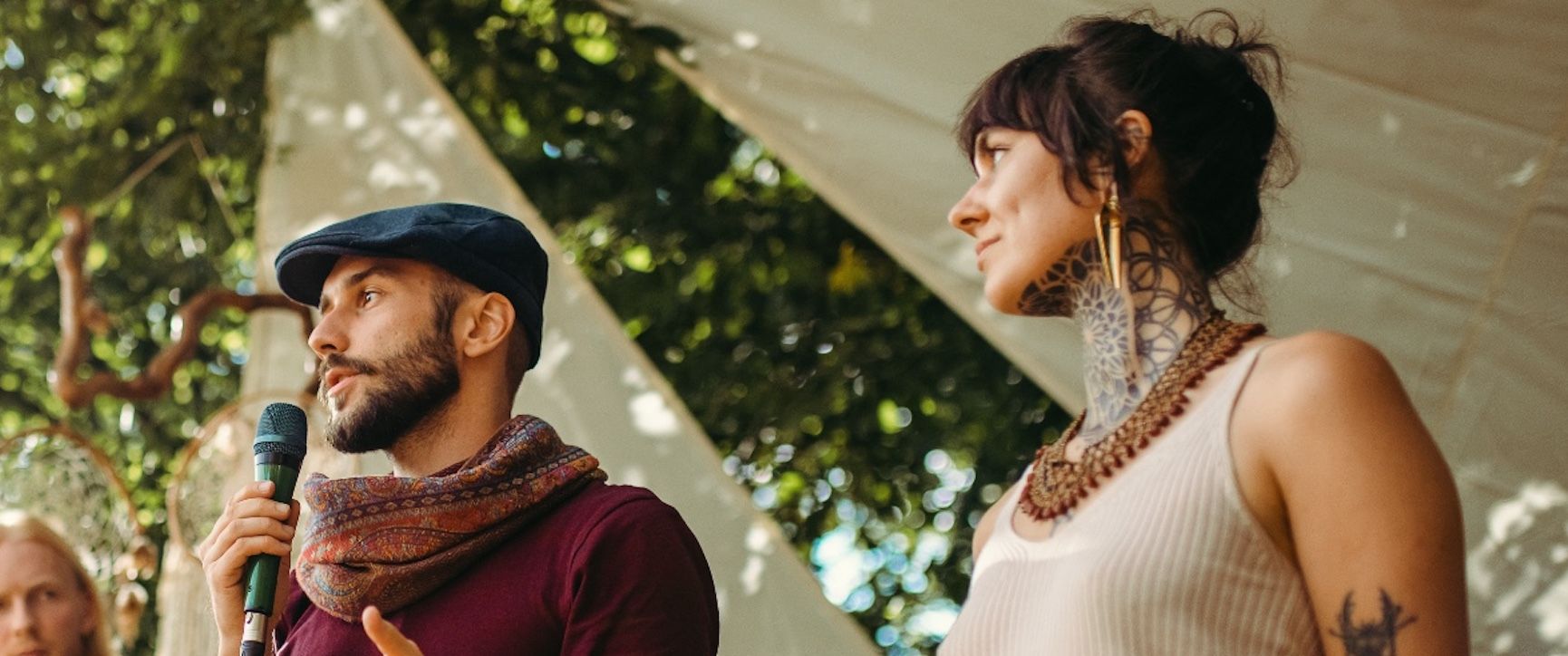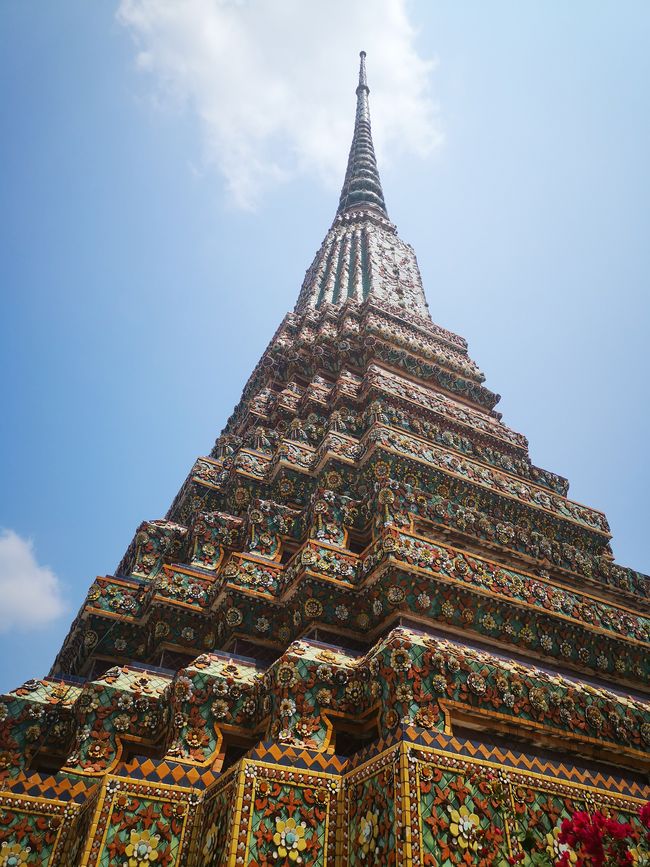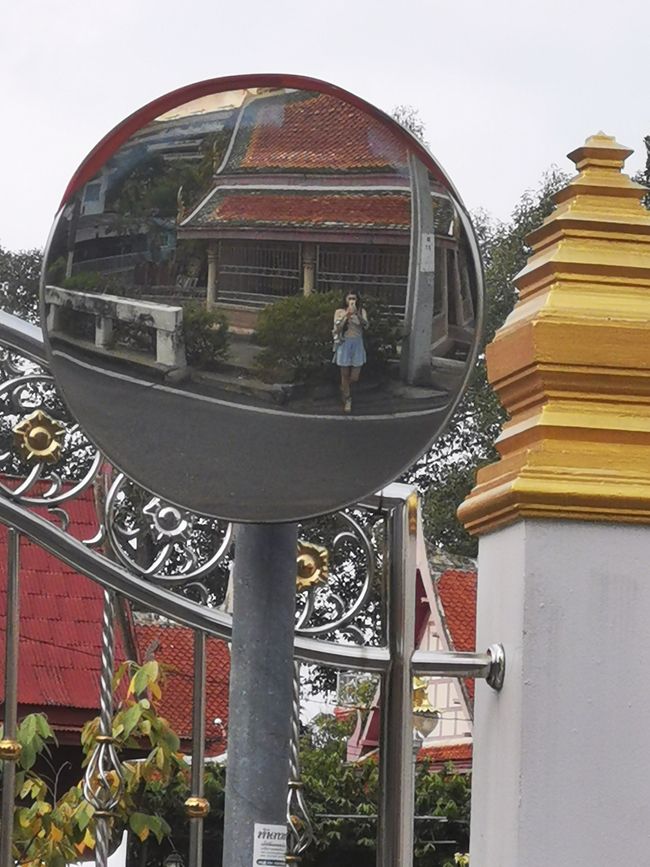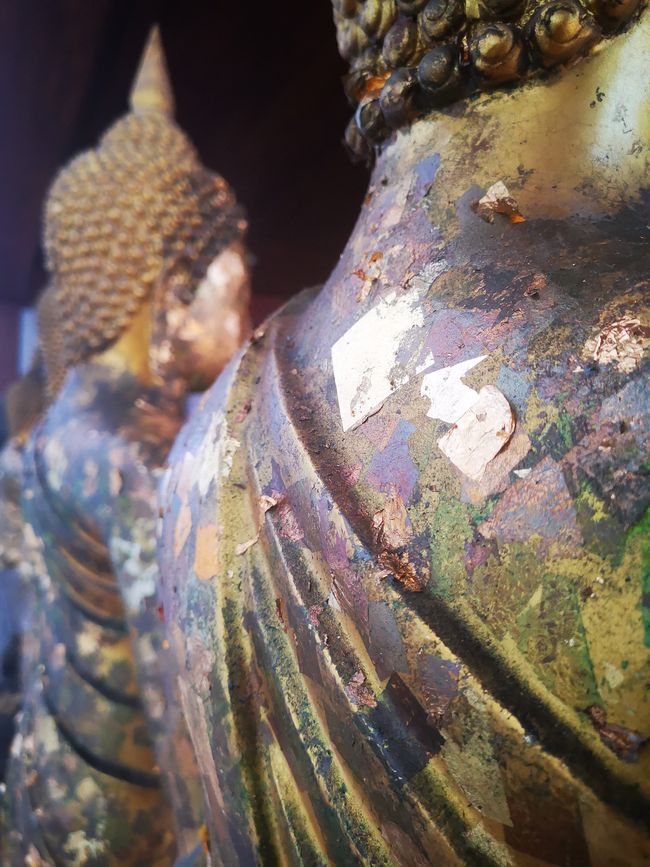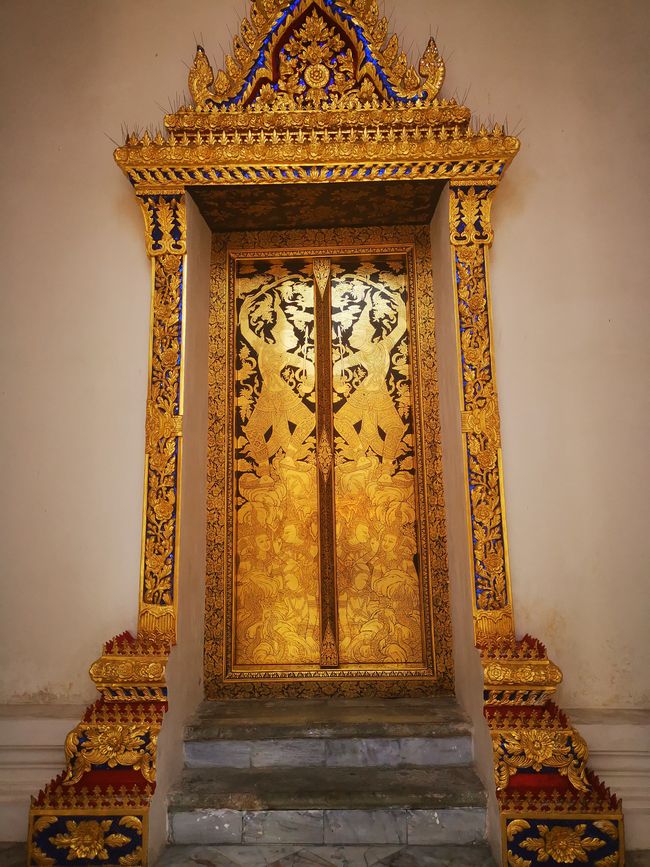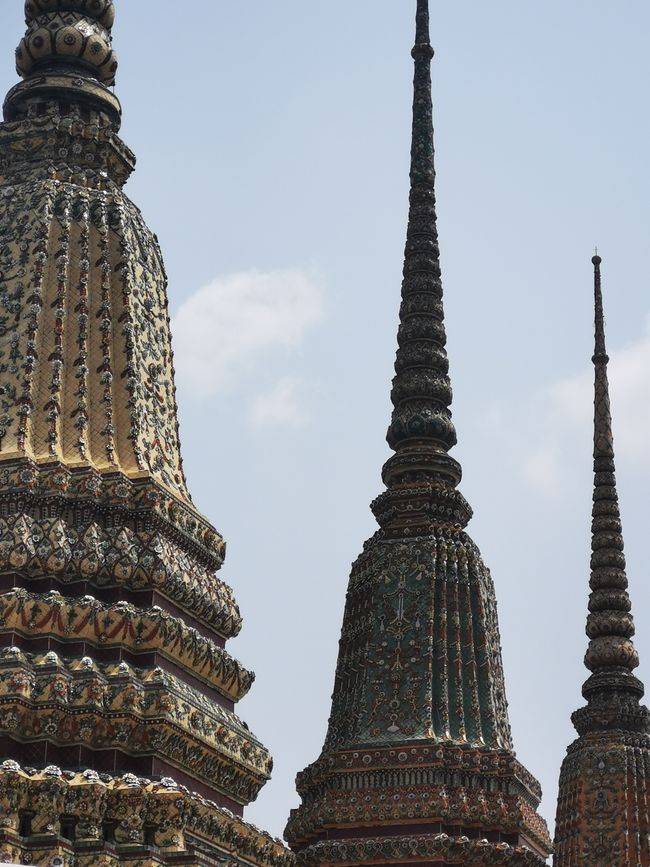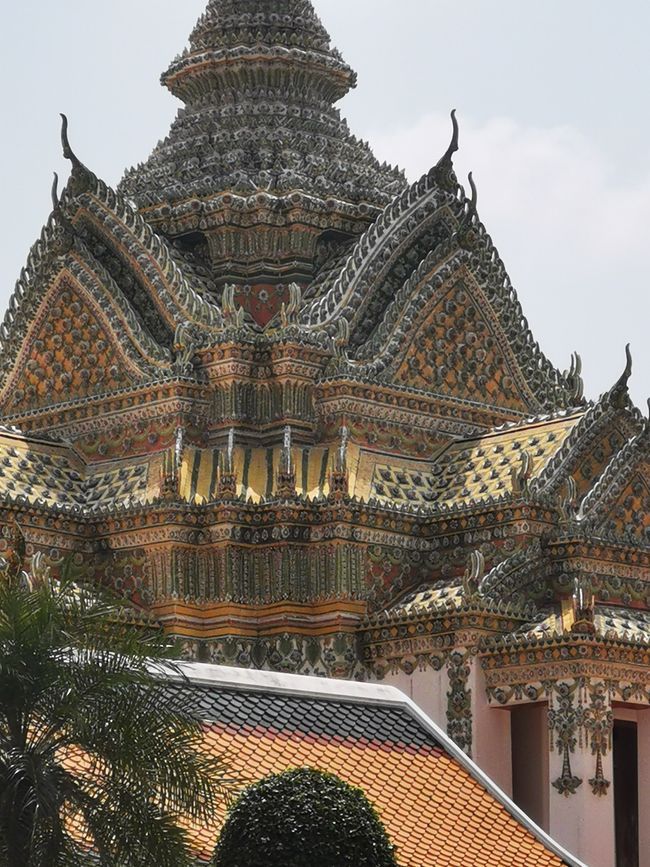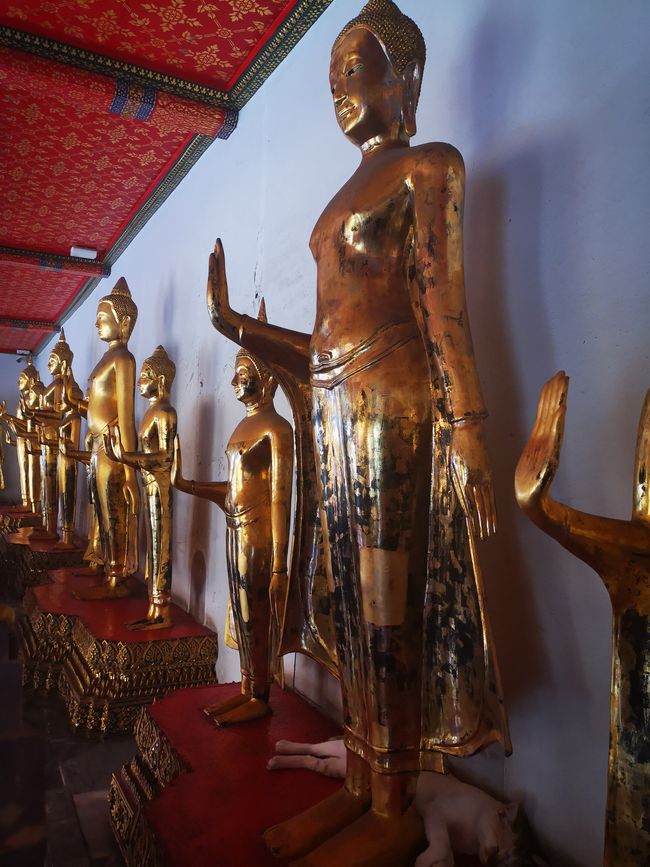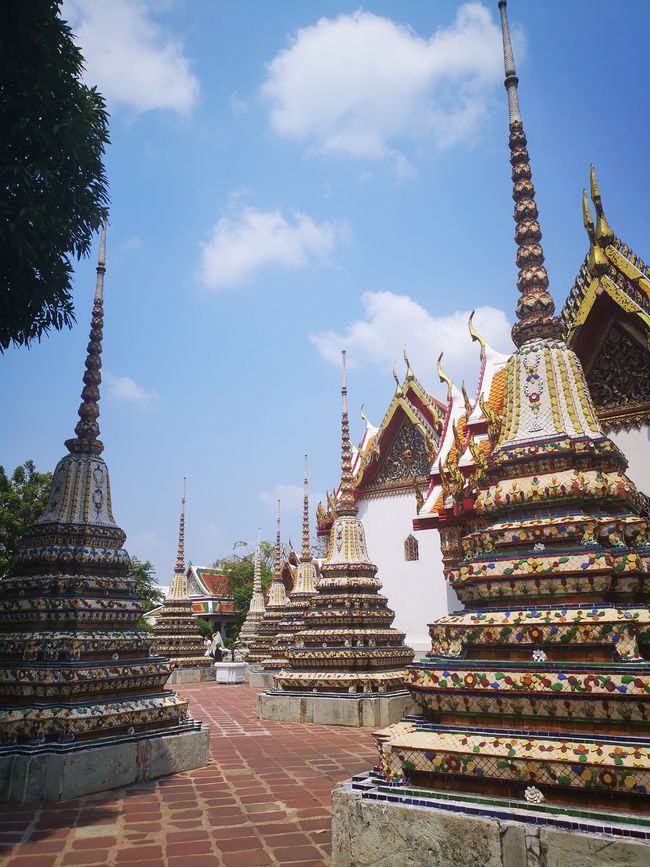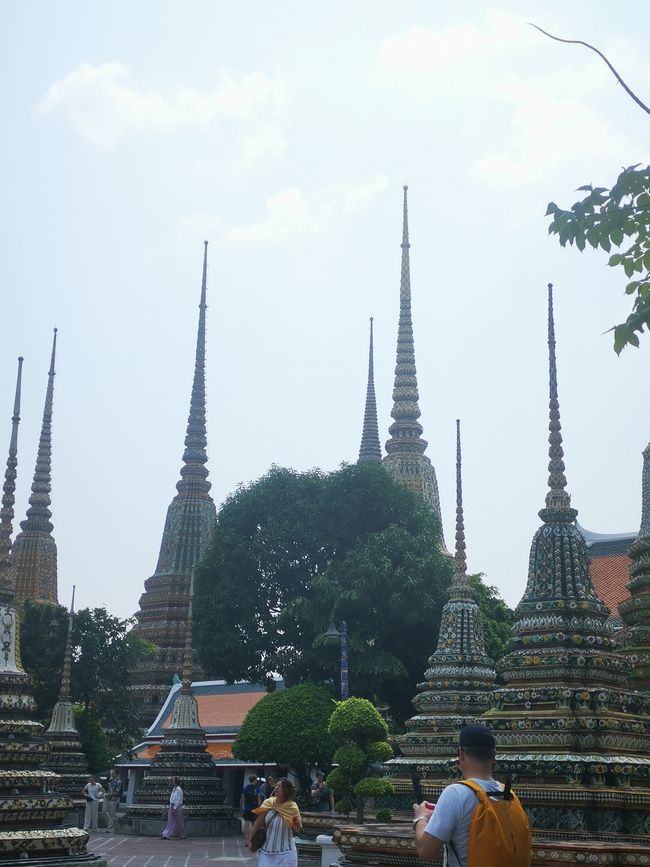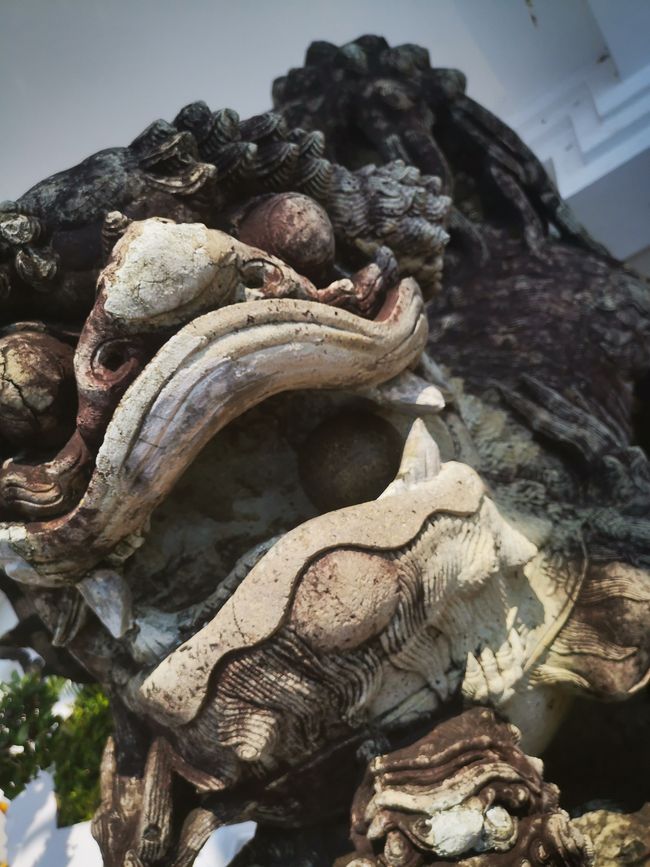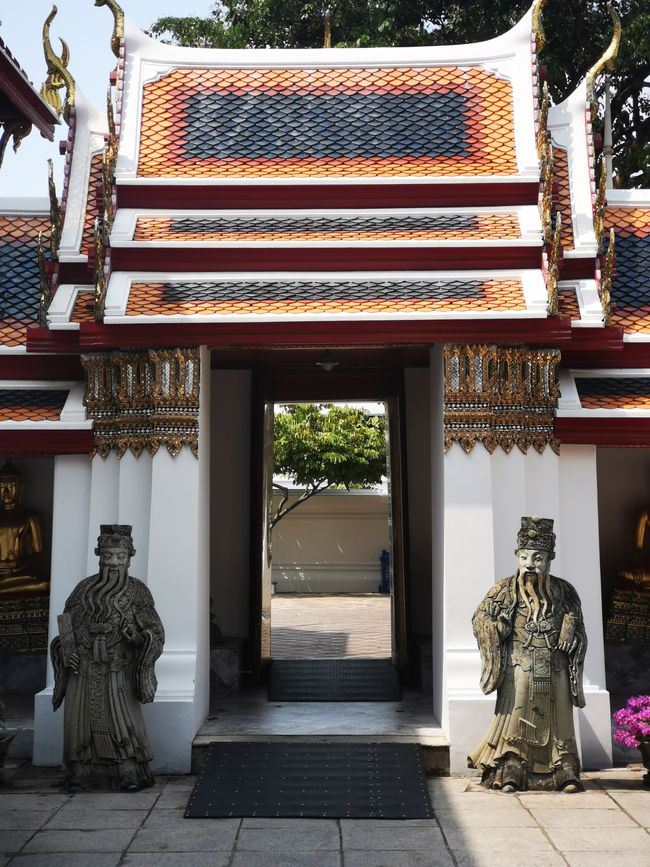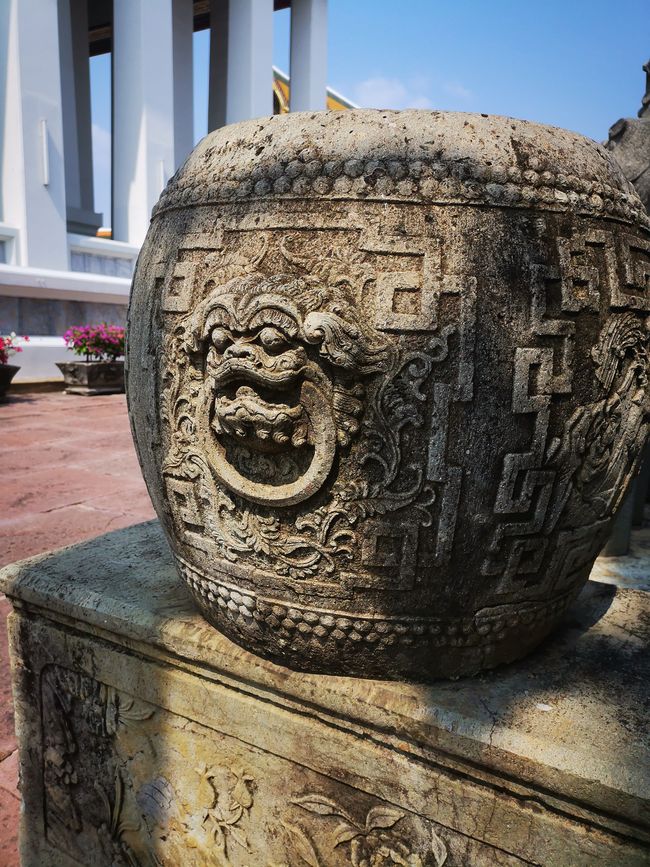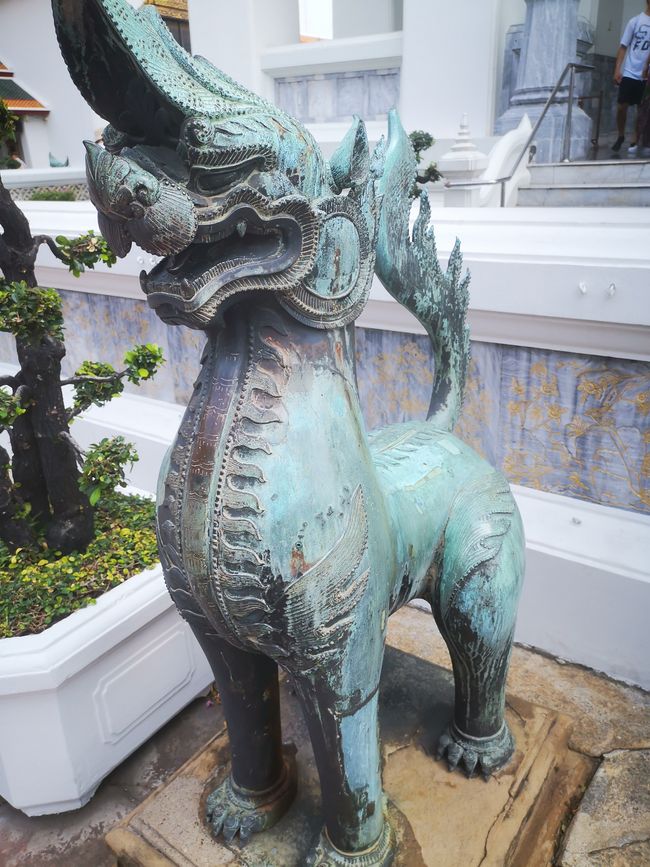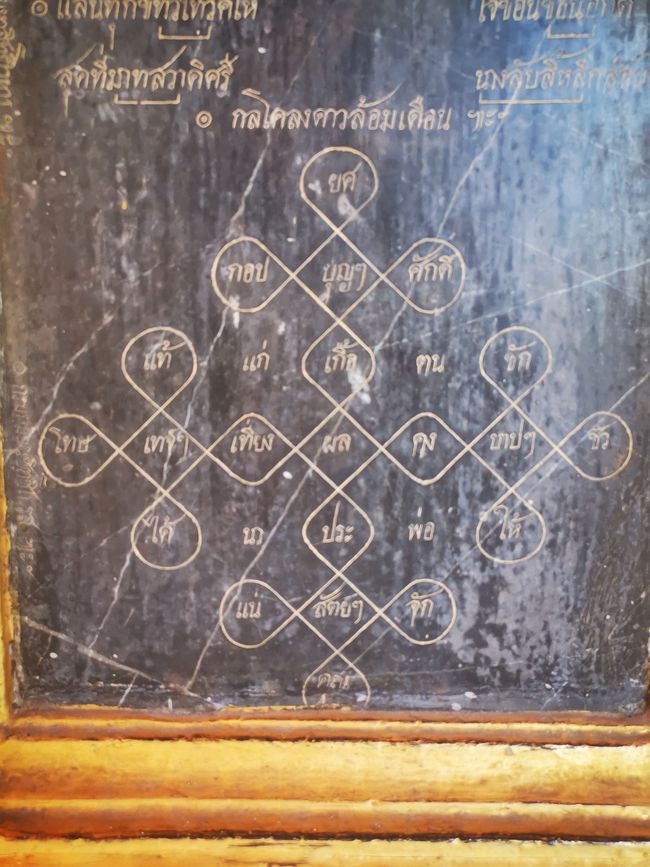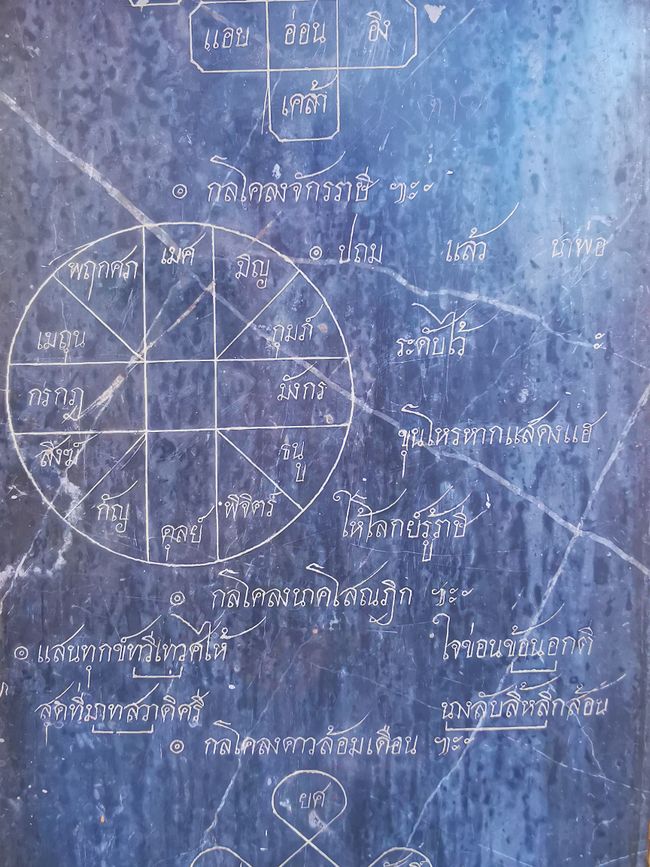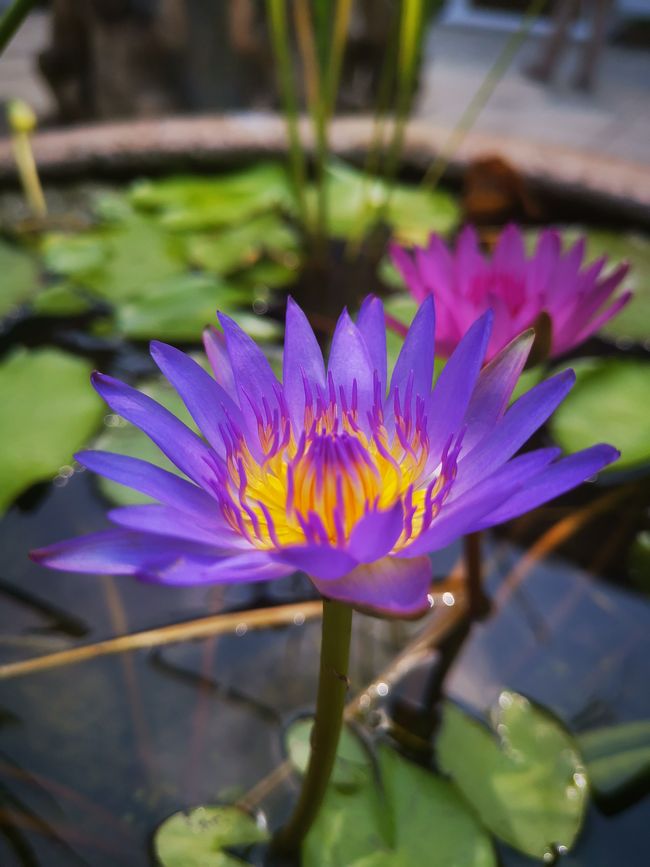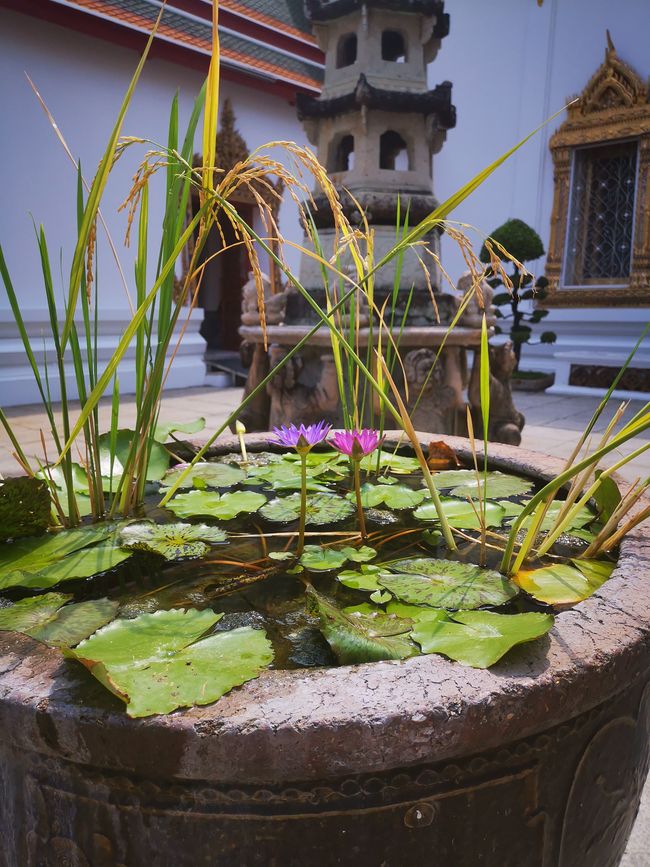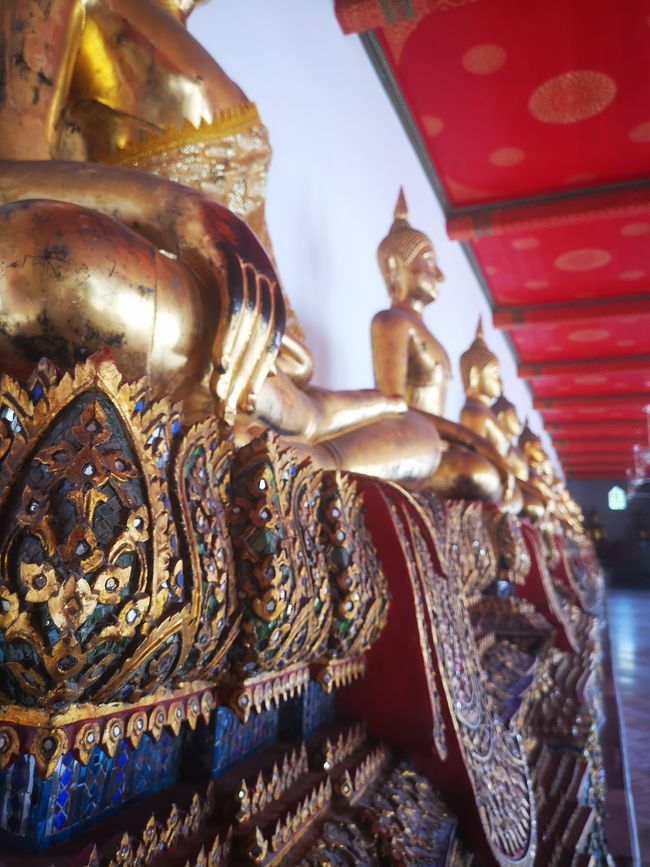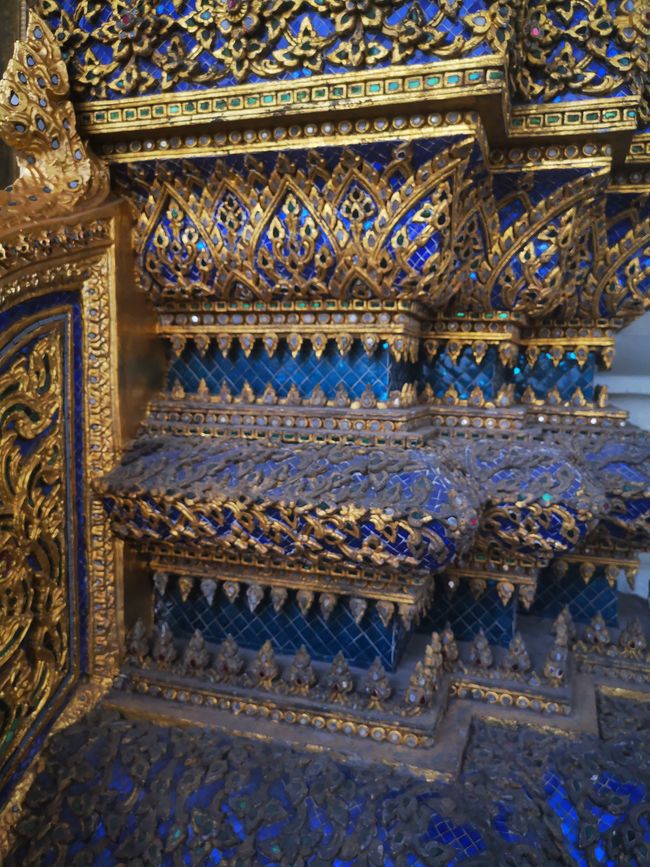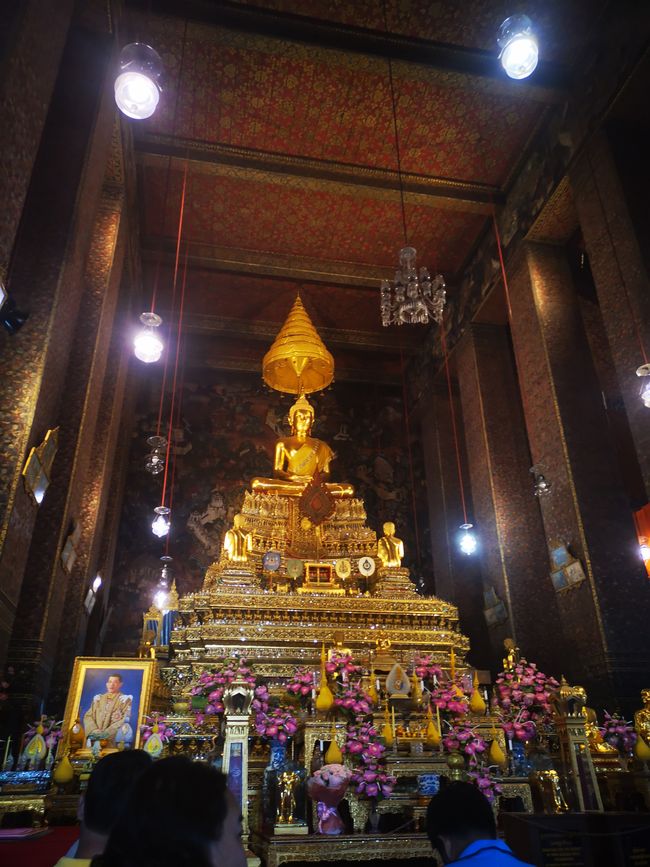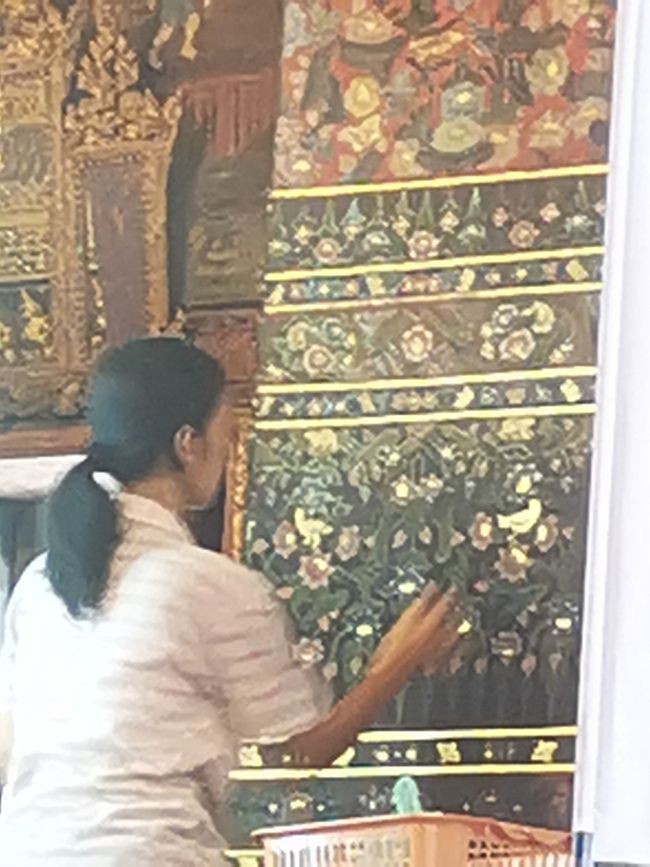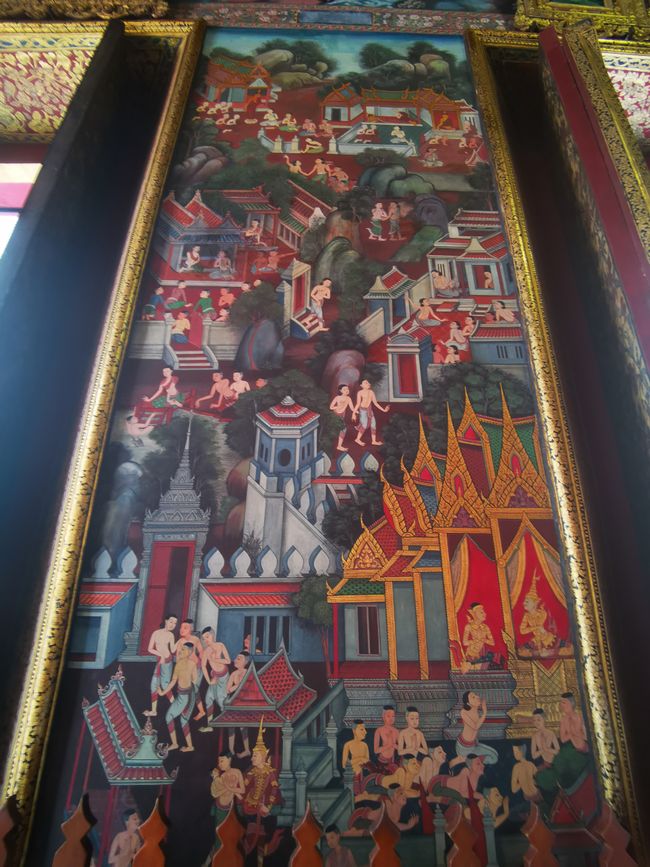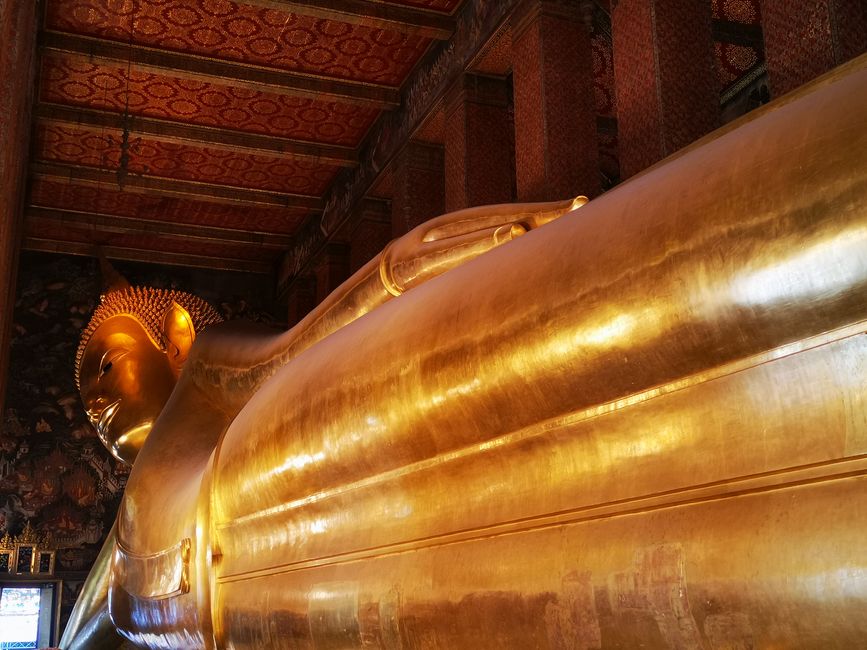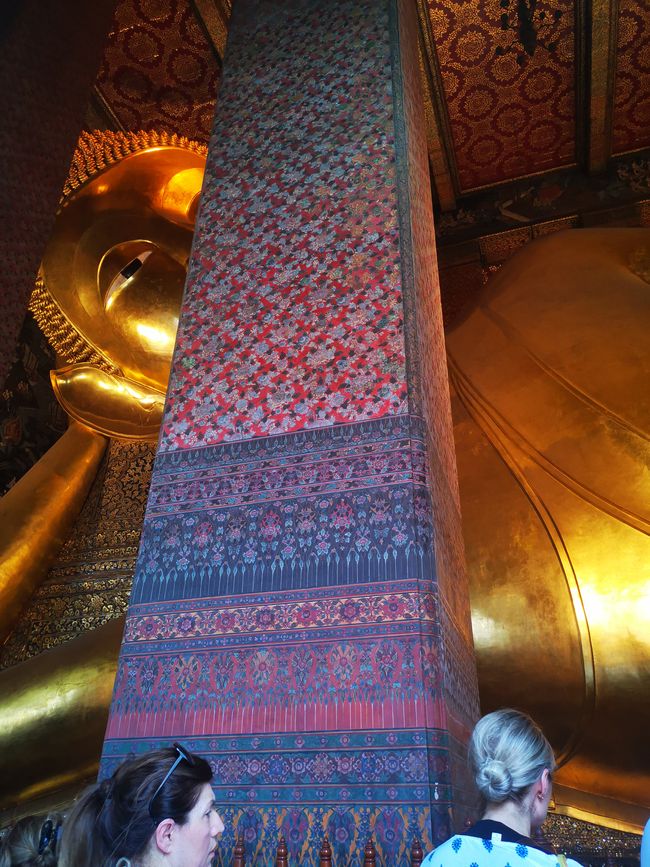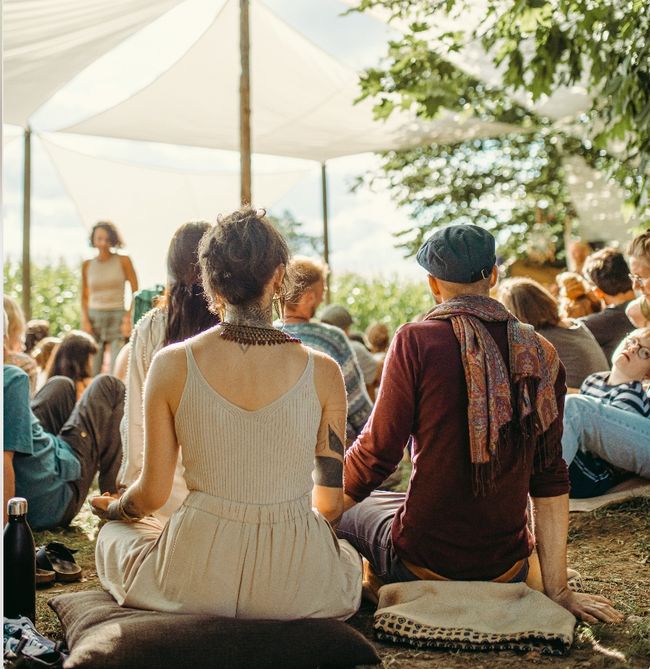
zwei-kuenstler-und-die-weite-welt
vakantio.de/zwei-kuenstler-und-die-weite-welt
What Pho
La daabacay: 08.05.2024
March 11, 2024
We started our day by working on our projects and I once again designed a new tattoo. Strengthened with a small fruit smoothie, we made our way to the large temple complex Wat Pho .
Wat Pho was founded in the 17th century, during the time of the Siam Kingdom of Ayutthaya, and was expanded by the reigning king between the 18th and 19th centuries.
Wat Pho was home to countless Buddha statues and many were decorated with real gold leaf by devotees as a sign of their devotion.
Many prangs, reminiscent of long bells, lined the paths. Each prang symbolized Buddha, or the seat of Buddha energy, an aspect of Buddhism. Their towers always rose out of the sea of concrete and thus reminded people from afar of the dominant religion and what was really important. Prangs were treated like temples or shrines, but were not accessible because they had no entrance or exit. Small niches were left out on the outside for Buddha images.
Built from bricks and decorated with colorful tiles and glass stones, they date from the Rattanakosin era and thus reflect the classic architectural style of that time. Their unique architectural style ensured that the tapered steps always made the buildings appear higher than they actually were.
The main buildings of the temple complex, which were also built in the Rattanakosin style, were also impressive. The details of the small flower tiles and ornaments created a beautiful picture. The tips that protruded from the roofs and pointed towards the sky, called Chofah (=sky tufts), symbolized the being Garuda, which found its place in some mythologies. Like the Greek messenger of the gods Hermes, Garuda, half human, half eagle, also had the function of delivering messages.
In ceremonies, the stylized and artistically carved bird was placed at the top of the temple roofs.
The Garuda in Thailand was not only an ornament on roofs, but also a royal emblem and could therefore be found on many public and official buildings.
There were over a thousand Buddha statues in the temple complex. Many depicted Buddha with subtle differences in body and facial shape and position of the hands. For example, a hand with an outstretched index finger symbolized an aspect of the Buddha who was teaching.
Particularly large prangs stood in the inner courtyard and each symbolized one of the great rulers Rama.
So-called "Foo Dogs" - Chinese lion dogs - stood at the entrances and exits and were always to be found in pairs. These were originally intended as protective guardians of the place, but were - like other Chinese statues - loaded onto ships to Thailand to weigh them down and make the journey easier. Nevertheless, these figures were beautiful works of craftsmanship and fit well into the overall scenario.
Further inside the complex there were tablets with formulas and information about nature and science. We would have loved to have had more precise translations of these.
Like other temples, Wat Pho had not just one main altar, but many different (but still identical) ones. Gigantic Buddha statues stood in the middle of them and people paid homage to them, made offerings and prayed. In the middle of the hustle and bustle, a Thai lady sat and restored by hand (!) the extremely elaborate wall paintings inside.
The main attraction of Wat Pho was the 60-meter-long statue of a reclining Buddha. We still wonder if it was covered in real gold (it most likely was).
As we learned, the statue was erected first and only then was the building built around the statue.
In any case, it was impressive and the complex was worth a visit.
Jawaab
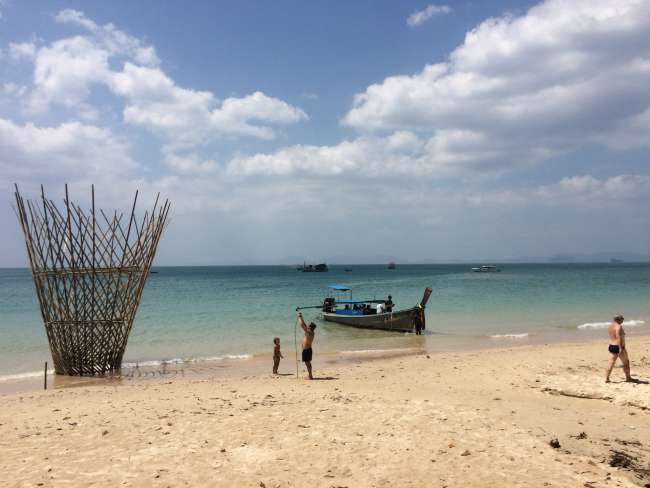
Warbixinaha safarka Thailand
